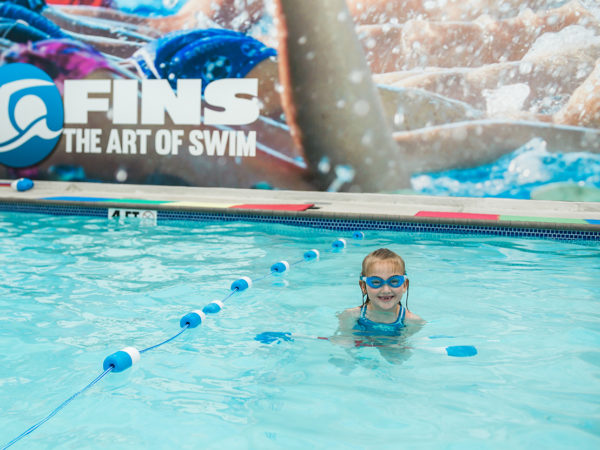By now, hopefully, you have had the chance to bring your child to swim class at least once, maybe even twice. We certainly hope they are having a great time and love coming back each week! Our instructors are trained to do their best to read cues from the children. If they are gung-ho, we are jumping right into all of the skills with them. If they are a bit more apprehensive or shy, we are taking a slower approach to build trust. Once the trust is established, your child will flourish and begin making great progress in lessons! We ALWAYS welcome feedback if there is anything you think would be helpful for us to know about your child!
Last week, we touched on the importance of water safety in our beginner swim lessons. This week, we want to dive deeper into FINS’ main focus: water safety, and how it looks in our Intro to Swim and Safety program. You now know, as we do, that drowning is the leading cause of accidental death in children ages 1-4, and the second leading cause in children ages 5-14. FINS is on a mission to change those statistics and by enrolling your child in swim lessons, so are you! In our classes, we will focus on 2 main water safety skills: how to get back to the wall if they fall in and the back float.
As we mentioned in the last email, teaching water safety is of utmost importance and is our #1 goal. It’s equally important for children to have fun while mastering these skills. We want children to feel safe and loved while learning. In class we create experiences, rhymes, and songs to establish muscle and cognitive memory. We also practice through repetition, repetition, repetition! Our goal is for their brain to associate the positive experiences and be able to utilize the skills they learned to save themselves in a potentially life-threatening situation.
- Fall In, Turn Around, Climb Out – a skill that is built in to the classes with activities like: Humpty Dumpty, Monkey Toes (aka safety jumps) and swim out/back to the steps. We like to practice these skills using steps/ledge, platforms and the side of the pool, because we want children to have continuous practice on a variety of areas where they can potentially self-rescue. We emphasize this water safety skill in addition to the very important back float, because statistically most young children fall in very close to a self-rescue area. It is rare for them to wind up way out in the middle of a pool or body of water all alone, especially since a majority of accidental falls into the water are a result of reaching for something.
Back float and Roll to Back Float is incorporated throughout our classes with a range of methods including: singing a song, counting or practicing ABC’s while in back float position along with rolling to float from belly to back. We have 2 goals when teaching the back float; First is for your child to be comfortable in the back float position. We want them to sustain the back float so that they can get air and rest if they ever get in trouble in the water. The second goal is to create muscle memory. If this is achieved, your child will know to flip over on their back when they need air. The back float can be used for self-rescue, but can also be used to progress their swim endurance as they learn to swim further and further. We never rush a young child out of a back float position. We encourage them to take a rest, take a few breaths and relax.
Speaking of swimming longer distances, be on the lookout for an email next week where we dive deeper into breath control progression and increasing swim endurance within this program. You’ll find out just how far your child will be able to swim safely!




